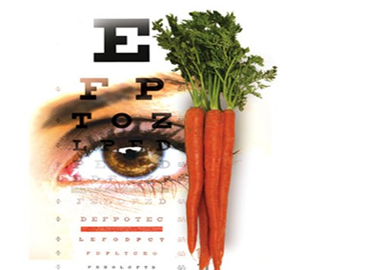DIABETES
Diabetes is the leading cause of vision loss for Americans under the age of 74. This disease is characterized by too much sugar in the blood, which can cause damage throughout the body, including the eyes. When seen in the eyes, it is called diabetic retinopathy; a serious sight-threatening condition that causes progressive damage to the retina. If left untreated and undiagnosed, it can ultimately lead to blindness.
Symptoms of diabetic retinopathy include seeing spots or floaters, blurred vision, having a dark or empty spot in the center of your vision, or difficulty seeing well at night. If experiencing any of these, we invite you to visit our practice for your comprehensive dilated exam. Our Optometrist, Dr. Ukegbu, is committed to educating you about ways to prevent and minimize diabetic retinopathy and routinely works with other health care professionals - including primary care physicians, endocrinologists, dental professionals, pharmacists and specialty eye surgeons to ensure her patients receive the highest quality of care and live healthy lives.
If you are diabetic, you can help prevent or slow the development of diabetic retinopathy by:
• Taking your prescribed medication
• Sticking to your diet
• Exercising regularly
• Controlling high blood pressure
• Avoiding alcohol and smoking
• Routine annual eye checkups
GLAUCOMA
Glaucoma is an eye disease in which the passages that allow fluid in the eye to drain becomes clogged or blocked. This results in the amount of fluid in the eye to build up and cause increased pressure inside the eye. This increased pressure damages the optic nerve which connects the eye to the brain. The optic nerve is the main carrier of vision information to the brain.
Damage to it results in less information sent to the brain and a loss of vision.
The exact cause of glaucoma is not known and it cannot currently be prevented. But, if detected at an early stage and treated promptly, glaucoma can usually be controlled with little or no further vision loss.
This is why early eye examinations are so important. People of all ages can develop glaucoma, but it most frequently occurs in people:
• who are over age 40
• who have a family history of glaucoma
• who are very nearsighted
• who are diabetic
• who are African American
Glaucoma can usually be treated effectively by using eye drops or other medicines. In some cases, surgery may be necessary. Unfortunately, any loss of vision from glaucoma cannot be restored. But, early detection, prompt treatment and regular monitoring can enable you to continue living in the same way you have always lived. Protect your eye health and examine your eyes annually with your Optometrist.
CATARACTS
A cataract is a clouding or darkening that develops in the normally clear lens of the eye. This prevents the lens from properly focusing light on the retina, resulting in a loss of vision described by many people as a "film over the eye". It is often thought of as a part of the natural aging process, but it may also result from heredity, an injury, a side effect from medications, or from a disease. Cataracts are most often found in persons over 55, but are also occasionally found in younger persons, even newborns. It usually develops in both eyes, but often at different rates. Some cataracts develop slowly over a period of years while other forms develop rapidly within a few months. Common symptoms are double vision, a gradual loss of color, a stage where it is easier to see without glasses (a secondary sight), or an increase need for more light to see clearly. Symptoms may vary from person to person depending on its development. Consult with your Optometrist if you are noticing changes such as these to your vision. Ultimately, if your cataract impairs your daily activities, surgery may be an option for treatment. Technology has made cataract surgery relatively uncomplicated and has a 95% success rate.
DRY EYE
The natural tears that your eyes produce are composed of three layers: the outer lipid layer, a middle watery layer, and the inner mucous layer. Dry eye is the term used to describe eyes that do not produce enough tears or tears with the proper chemical composition in any of these layers. Dry eye is most often a result of the eyes' natural aging process. Most peoples' eyes tend to become drier as they age, but the degree of dryness varies and some people have more problems than others. Besides aging, dry eye can result from working on the computer for long periods of time, certain medications like antihistamines, oral contraceptives and antidepressants or from general health problems like arthritis or Sjrogen's syndrome.
Symptoms are often different from person to person, but the following are commonly experienced by those whose tear production is inadequate:
• irritation, scratchy, dry or uncomfortable
• redness of the eye
• a burning sensation of the eyes
• a feeling of a foreign body in the eye
• blurred vision
• excessive watering as the eyes try to comfort an overly dry eye
If untreated, dry eye can be more than just irritating or uncomfortable. It can damage the eye tissue possibly scarring the cornea and impairing vision. Contact lens wear may be more difficult due to the possibility of increased irritation and a greater chance of an eye infection. Dry eye does not go away, but by working together, you and your doctor can keep your eyes healthy and protect your good vision.

